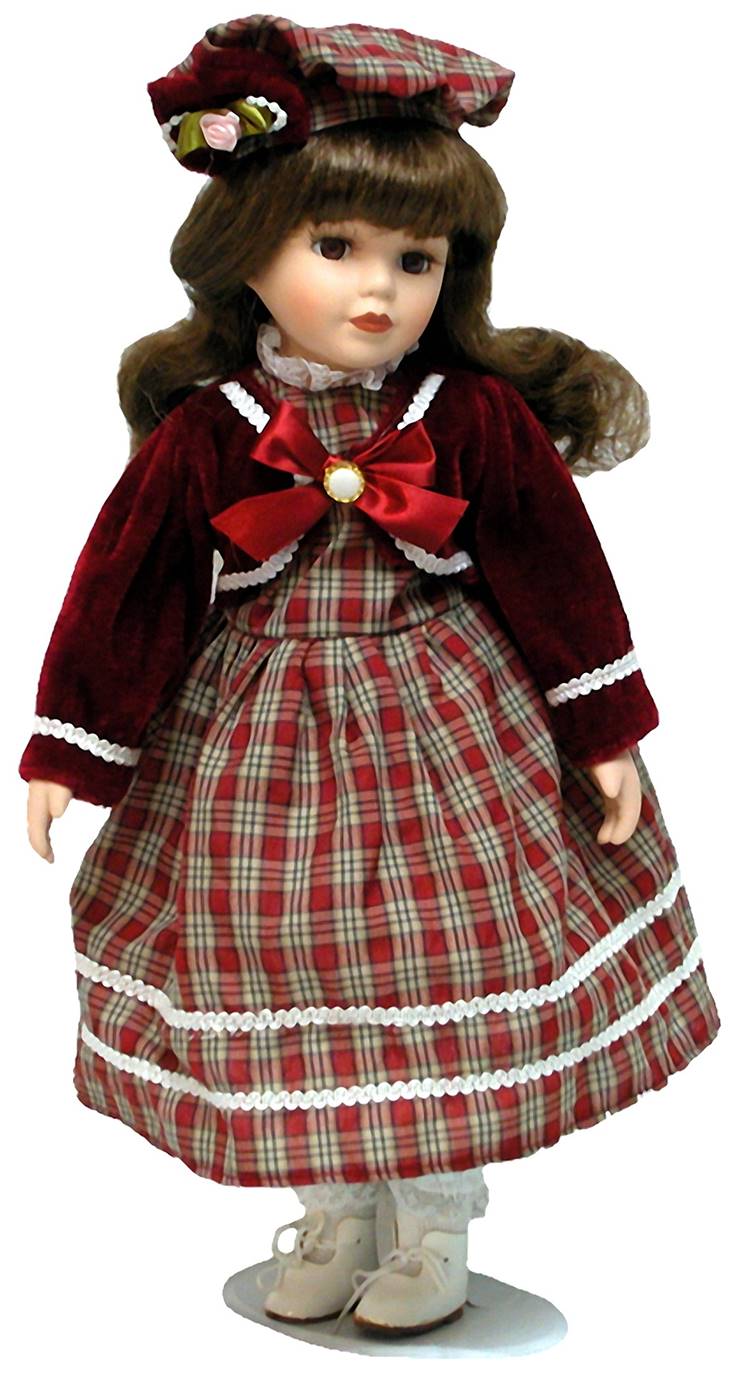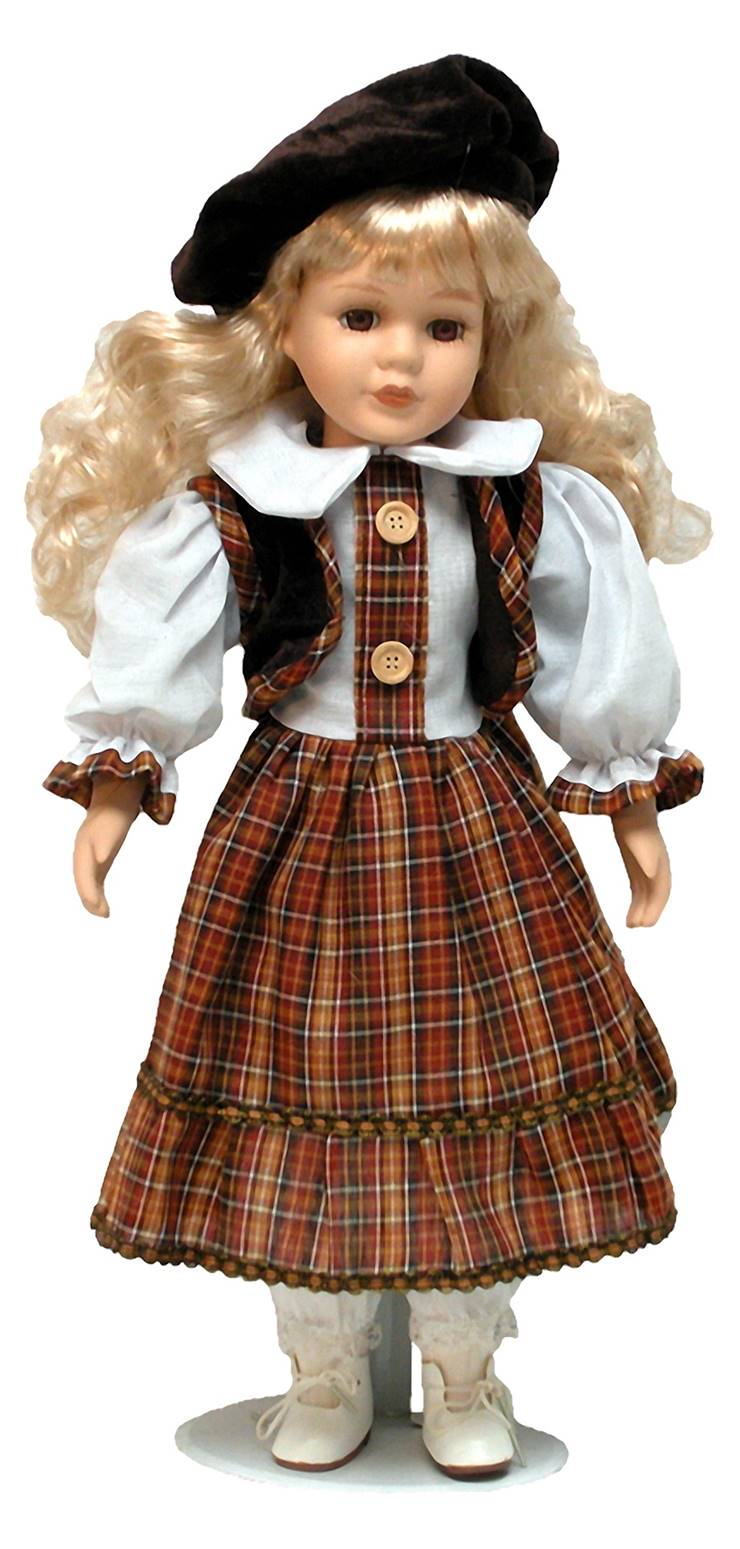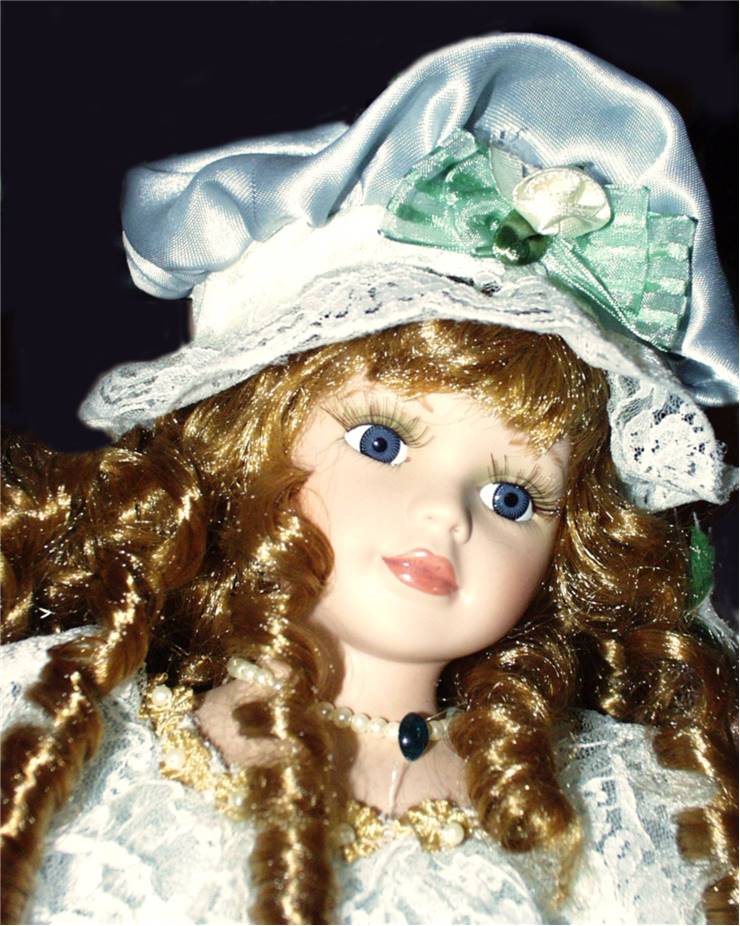Porcelain Dolls - Types and Value of Antique Collectible Porcelain Dolls
One of the most significant precursors of the modern porcelain (bisque) doll arrived during the 15th-century “nativity scene” movement in Italy, where elaborate exhibitions were made (particularly during the Christmas season) in which dozens and dozens of dolls were arranged to represent the famous moments from the life of Jesus. As Renaissance started spreading across Europe, 16th-century France became the homeland of the first organized movement to create elaborately clothed wooden dolls that were made for children and adults from wealthier or royal families.
Since wooden dolls prevented toymakers from creating realistic-looking recreations of the human form (especially problematic were the face and eyes), the European market had to wait for a long time until new suitable material would appear. This happened in the early 19th century when European toymakers learned the secrets of making Chinese porcelain.

Types of Porcelain Dolls
Although porcelain dolls are created from two basic porcelain materials, there are different types of porcelain dolls made of glazed porcelain and those made of unglazed porcelain. Popular categorization of porcelain dolls also can be made according to country of origin, such as Chinese, French, and German porcelain dolls.
Chinese Porcelain Dolls
China mastered the art of creating porcelain two thousand years ago. Still, many of its manufacturing secrets arrived in Europe much later, in the early 18th century, via the reports of the French Jesuit Father Francois Xavier d'Entrecolles, who published his exploits in China in a popular book - Description de l'Empire de la Chine. The availability of new production material that could be transformed into any shape and easily re-created thousand times from a fixed mold cast pushed the art of doll-making into a new age. The first dolls created from porcelain were called China Dolls, featuring fully glazed porcelain. Most dolls created this way during the 19th century featured porcelain only on their heads and shoulders. The rest of the model was still made from wood (sometimes with joints that enabled articulation), but it was hidden behind elaborate clothing. Later models added porcelain hands and feet, while some were made entirely from porcelain. Dolls created this way were made in all sizes, from small 2.5cm models to the extravagantly expensive 46 cm models.
Chinese dolls became very quickly popular in several European territories, with the height of popularity between 1840 and 1940. In the early 1900s, millions of Chinese dolls were created all around Europe. In mid 20th century, sales dwindled, but production continued, most notably in the United States and Japan.
Bisque Dolls
While Chinese dolls enabled porcelain toys to become popular across Europe, dolls created from bisque porcelain gathered even more attention. The bisque porcelain is not as glazed as traditional Chinese porcelain, giving it a different surface texture and look. Dolls created from bisque porcelain feature a much more realistic and skin-like matte finish, which makes them much more desirable.
Bisque porcelain was created by heating raw ceramic material in the mold at a temperature of more than 1,260 °C (2,300 °F). To achieve a realistic skin tone and feel, the head of the dolls was painted in layers, and after each layer, the entire mold was re-heated. The result was a doll with a realistic skin tone and feels. Alternatively, Bisque dolls can also be made without adding skin colors. Such models are often called “parian” dolls. The eyes were usually created from glass and inserted into the head after the painting was complete. Bodies of the early Bisque porcelain dolls were usually made from various materials, including wood, cloth, leather, or papier-mâché. Full-porcelain dolls were rare and expensive. They were very heavy and could easily break, particularly in the joints. The primary purpose of other materials for body construction was to ensure better robustness, articulating joints, and longer durability.
The height of the popularity of bisque porcelain dolls happened between its creation in 1860 and 1900 in France and Germany, where most dolls were created in small to mid-sized toymaker shops to be children’s playthings, with rare models being produced for collections and exhibitions. By 1900, the vast majority of dolls created featured bisque porcelain heads. Some of the first doll models depicted fully grown men and women, but most quickly switched to children. This focus on younger customers pushed sales to a new level, and most toy sales until the 1930s remained targeted at children. Tiny dolls called “penny dolls” were the most popular. As for sizes, the bisque dolls ranged from half an inch to the lifelike five-foot tall models of girls.
German and French Bisque Dolls
Since Germany and France were home to the largest European manufacturing efforts between 1840 and 1880, these manufacturers held market dominance on the entire continent without much challenge until World War I. While French dolls quickly became famous for their elaborate clothing and high offering of fashion styles, many of the most famous dolls from France used heads manufactured in Germany. The most famous French bisque doll makers from the 1800s were Jumeau, Bru, Gaultier, Rohmer, Simone, and Huret. While France was focused on fully grown dolls for a long time, Germany tended to produce smaller toy dolls for children. Manufacturers like Armand Marseille, Simon & Halbig, K*R, and Kestner focused mainly on dolls that could be used as toys between the 1890 and 1930s.
Porcelain Doll Collecting
Post-WW2 adults started slowly growing appreciation for the antique Bisque porcelain dolls models, culture, and history. The revival of the classic 19th-century bisque dolls became first apparent around World War II when several toy makers started reproducing more elaborate models from the 1860s and 1870s. This hobbyist production of reproduction dolls slowly gained traction, spreading to continental Europe, England, and Australia during the 1970s and 1980s. Many collectors value not only the craftsmanship, fashion style, and value of the dolls but also historical periods, culture, fashion, social scene, and manufacturing histories from when they were created. For example, while the majority of porcelain dolls were either mass-produced, many gained their value not only by being made in small batches of high-quality manufacturers (like Madame Alexander and Mattel, whose dolls were created from the start to be prized and valued highly) but also by becoming associated with famous people. Famous French actresses of the 1920s frequently adorned their favorite porcelain custom-molded dolls (called "boudoir dolls") to resemble their looks and attire. They brought those dolls which mirrored their appearance every night to Paris nightclubs.

Porcelain Dolls Value
For most models of porcelain dolls, judging their initial value can be as easy as visiting sales listing on popular online auction websites such as eBay. Most porcelain doll sales are around $10, with rare ones reaching $200, while their actual value cannot fully appraise this way. Dolls of the same manufacturer and series can have varying prices, determined by their condition, changes in collector’s tastes, fashion trends, and more. Some cheap doll models created for children are worth $200 or even $300 per piece today.
Physical examination of the doll with a magnifying glass can reveal insights that can help determine its value – the name of the manufacturer, mold numbers, identifying markers (usually located on the neck, shoulder, or backs of the head), condition of the dolls clothes (is it original or replaced, in good condition or damaged), condition of the porcelain “skin” of the doll (presence of smudges, cracks or discolorations), and state of dolls hair (missing or matted hair). Its materials can also help in the identification of its age. For example, one of the best signs that a doll was created in the 1800s is its non-rooted hair. The majority of dolls made in the 1900s have rooted hair. Porcelain dolls created before the 1930s are considered antiques and can easily fetch a higher price than models created after the 1930s.
After starting with sites like eBay, sellers can turn to online forums dedicated to porcelain doll collecting to gain additional insights. Alternatively, many physical books and magazines aimed at porcelain doll collecting were released. High-end porcelain doll collectors often contact professionals who will determine the exact condition of the doll. Dolls' history of origin and manufacture determine its starting value and provide the seller with the certificate of the doll’s authenticity, which can often significantly increase the value of the doll. Famous porcelain dolls are often part of expensive auctions, with some of the most prized porcelain dolls of today can reach a sale price of up to several hundred dollars.
The current most expensive porcelain doll came from the set of dolls created by French sculptor Albert Marque during WW1 for the Parisian couturier Jeanne Margaine-LaCroix who demanded the creation of 100 dolls clothed in the style of the high fashion of Paris. One of those bisque porcelain dolls made in 1916 was sold by the auction house Theriault's for $300,000.


